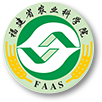Abstract:
Suitability of utilizingleaves from Wuyi Mingcong Baijiguan
(
Camellia sinensis) for processing teas was explored to extend the commercial valueof the newly cultivated variety. Fresh leaves plucked from the tea bushes wereprocessed into white as well as green tea. The chemical composition and sensoryquality of the tea samples were assessed and compared with Fuding Dabaicha (
Camellia sinensis). The results indicated that both experimental green and whiteteas had desirable refreshing sensory quality with high marketing potential.Chemically, the green tea was significantly higher in the contents of teapolyphenols, such as EGC, EC, EGCG, ECG and catechin, and theanine than thewhite tea. On the other hand, the teas made from the Baijiguan leaves werelower on gallic acid and caffeine than Fudingdabai green or white teas. Itappeared that Wuyi Mingcong Baijiguan
could be an additional resource to be cultivated for green and/orwhite tea production.




 下载:
下载: